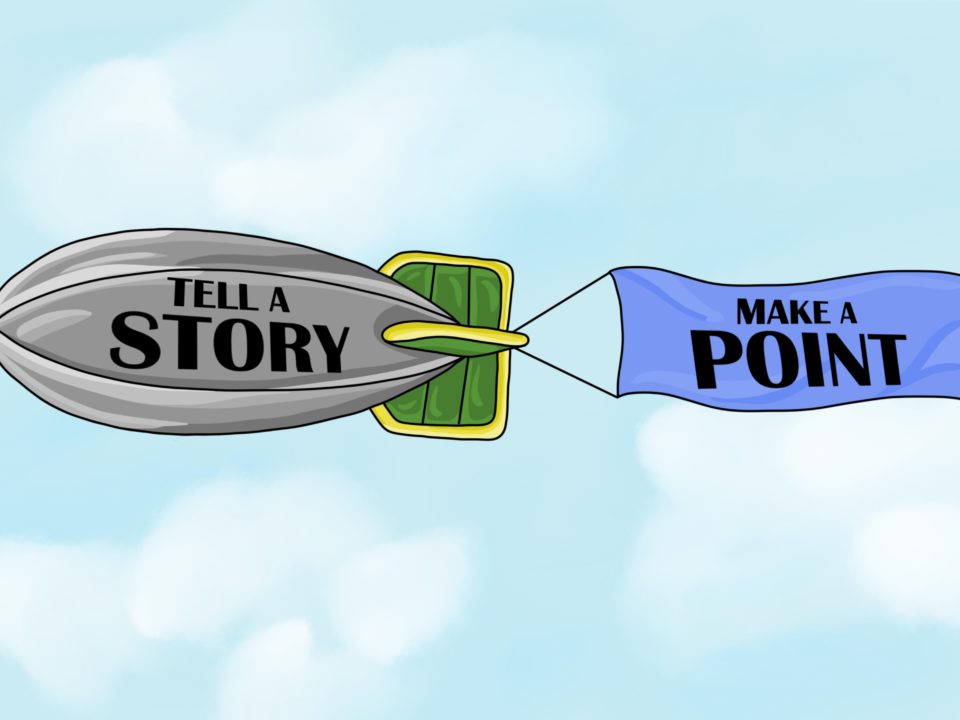- Contact Bob Goodyear at
- (404) 790-5855
- Bob@aGeekWhoSpeaks.com

Shoot Your Bullet Points
May 29, 2017
The Most Common Public Speaking Question is…
June 12, 2017The 5 C’s of Great Stories

Over the last few months, I have been working with different sales professionals. The goal has been to help them to become better presenters. One of the areas that we talk about is the importance of stories in a sales presentation. I wrote about this in a previous post. In this post, I will give you the same simple formula for creating stories that I teach them. All you need to remember are 5 C’s.
- Characters
- Context
- Conflict
- Cure
- Carryout
Characters:
First, describe the main characters in your story. What are their names? What role do they have in your story? Use a couple of adjectives to describe their physical appearance and maybe their personality.
Context:
Describe the place where the story takes place. If you close your eyes and put yourself in the location, describe what you see, hear, smell, and feel. Use descriptive words that will bring your audience into the setting with you. Next, describe what is happening that is causing risk or fear or uncertainty in the situation.
Conflict:
Here describe the consequences that may occur if something is not resolved from the context you just described. It’s in this section that you create tension. What could be the most extreme consequence from the context? Describe the risk or danger.
Cure:
Now it’s time to explain how things were resolved. This might be a story with a “happy ending” where all of the conflict was settled the best way possible. If so, explain how that happened. If it wasn’t so happy, explain what could have been done to make the problem better. When you take your audience through the problem, they want to have a payoff.
Carryout:
This should be something short and easily remembered. It should be a phrase that is 10 words or less. This is “lesson learned” part of the story. When you finish your story, this will be what your audience will remember.
This is a quick formula you can use to create your own stories. By making sure you have these 5 sections in your story, you will be able to create stories quickly that your audience will remember.




1 Comment
[…] including stories. One of the techniques that I teach is the 5 C’s of storytelling, which I’ve written about previously. This is a difficult subject for many technical people. In every class, I generally get these 3 […]